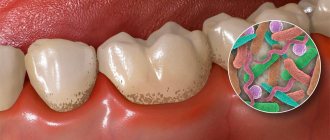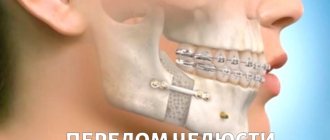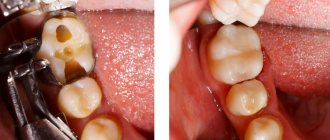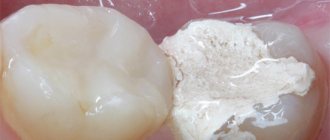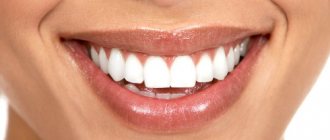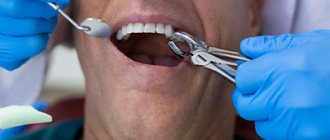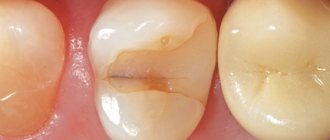Varieties
Unpleasant sensations can manifest as neck pain or shooting. Cervicago is an acute syndrome that prevents you from turning your head. Neck aching pain - cervicalgia. It happens:
- Superficial somatic. Occurs when the skin is damaged.
- Deep somatic. Appears when muscles and vertebrae are damaged.
- Visceral. Occurs as a sign of an infectious disease or pathology of internal organs.
If neck pain affects neighboring areas, either cervicobrachialgia (cervicobrachial syndrome) or cervicocranialgia (unpleasant sensations spread to the back of the head and then to the entire head) is diagnosed.
Causes
Most often, discomfort occurs due to muscle spasms or muscle strain. They happen for the following reasons:
- hypothermia;
- sudden turn of the head;
- staying in the same position for a long time;
- muscle overstrain during work.
The discomfort caused by these factors does not require complex treatment. As a rule, they go away on their own within 1-3 weeks.
If there is severe discomfort, numbness, the patient suffers from dizziness, impaired mobility, the causes of the illness may be much more serious. It is imperative to consult a specialist.
Acute pain syndrome is observed when:
- problems with the spinal column: bruises, soft tissue injuries;
- inflammatory and infectious diseases;
- radiculitis;
- herniated intervertebral discs;
- curvature of the spine in the cervical region;
- osteochondrosis, arthrosis;
- neurological diseases;
- fibromyalgia;
- oncology.
Depending on the disease and its degree, the pain syndrome may vary. Pathology can be suspected based on a number of accompanying signs.
Causes of pathology
If the lymph node in the neck under the jaw is inflamed, then the possible causes are:
- diseases of infectious origin that affect the ENT organs and the upper parts of the respiratory system (tonsillitis, sinusitis, tonsillitis, laryngitis, pharyngitis, otitis media);
- diseases developing in the oral cavity (caries, periodontal disease, periodontitis, periostitis, or gumboil, pulpitis, gingivitis, alveolitis, stomatitis);
- systemic infections (measles, whooping cough, mumps, popularly called mumps, chicken pox);
- pathologies affecting the immune system (lymphomas, leukemia, lupus, HIV);
- neoplasms (benign or malignant) of various origins (atheromas, granulomas, lipomas, cysts);
- infections caused by parasitic microflora (lymphoreticulosis, toxoplasmosis);
- disruptions in the functioning of the immune system.
You should know that the above ailments are not always accompanied by inflammation of the lymph nodes. Quite often, the nodes remain in a normal state even if the disease is acute.
If the lymph node under the jaw is inflamed, then in 60% of cases the pathology is caused by dental problems, in 30% by diseases of the respiratory system. In 20% of cases, the reason why the lymph node under the jaw is inflamed and hurts is advanced caries, leading to the development of a purulent abscess. After tooth extraction or conservative treatment of caries, pathological processes in the lymph nodes stop.
But sometimes it is tooth extraction that can become a provoking factor and cause an enlarged lymph node. A similar situation is possible if an infection enters the hole.
Pain in the front of the neck
Unpleasant sensations under the chin or along the entire front of the neck may indicate a number of pathologies. The list is impressive:
- inflammation of the lymph nodes;
- angina pectoris;
- cysts and abscesses;
- inflammation of muscles, ligaments and nerves;
- pathology of the thyroid gland.
It is impossible to independently determine which disease this symptom has. The cause of pain can also be pinching of blood vessels or nerves by an intervertebral disc that has become deformed.
Our Innovative Medical Center has developed a set of programs aimed at eliminating diseases without surgery or pills. The team consists of experienced doctors: neurologists, osteopaths, chiropractors, kinesiotherapists, massage therapists.
Back neck pain
Changes in the spine are the main cause of aching, sharp or nagging pain in the neck area. They occur due to low physical activity and constant work at the computer. Discomfort can be a symptom of the following diseases:
- osteochondrosis - changes in the structure of intervertebral discs;
- protrusion of intervertebral discs (their protrusion);
- intervertebral hernia;
- spondylosis - bone growths on the vertebrae;
- muscle spasms;
- vertebral fractures as a result of whiplash injuries or osteoporosis.
Pain in the back of the neck is a non-standard symptom of spinal tuberculosis, osteomyelitis, and Reiter's syndrome.
Pain syndrome in the lateral surfaces of the neck
Discomfort in these areas manifests itself as a burning, throbbing pain, sometimes accompanied by tingling. Unpleasant sensations spread to the shoulder or ear on the right or left. Sometimes they are accompanied by the appearance of secondary torticollis due to the constant tilt of the head to the affected side.
This symptom is inherent in the following pathologies:
- problems with blood vessels, atherosclerosis;
- muscle spasm due to a sharp turn of the head, hypothermia or physical exertion;
- malignant tumors localized in the larynx, thyroid gland, pharynx.
At the initial stage of rheumatoid arthritis, pain can spread to the cervical region, back of the head, and head. When turning the head or bending the neck, it intensifies.
You can feel it like this:
- Pain in muscle fibers. They can occur on both sides or on one side - on the right or left.
- Pain in the back of the neck, radiating to other parts of the body: in the back of the head (base of the skull), in the head, in the shoulder joint, in the arm, in the ear.
- Tissue pain.
Most often, painful sensations occur in combination with other symptoms. The most common among them are:
- Dizziness.
- Decreased sensitivity, numbness in the hands (most strongly felt at the fingertips).
- Headache.
- Darkening in the eyes.
Unpleasant sensations due to the time of manifestation can be:
- Chronic.
In this case, the back of the neck hurts constantly. The intensity can change: weaken (for example, after using painkillers) and increase.
- Spicy.
Appear after complete absence. Usually indicate the emergence of problems, or an exacerbation of an existing disease. They can appear either without obvious reasons or after some actions or situations (sudden movement, hypothermia, injury).
Symptoms
If unpleasant sensations rarely bother you, they may be the result of an uncomfortable sleeping position or awkward head movement. No special treatment is required. To eliminate discomfort, do exercises, light rubbing, take warm baths, it is recommended to use an orthopedic mattress and pillows. But there are situations when you urgently need a consultation with a neurologist or chiropractor.
Warning signs include:
- stiffness of movements;
- the duration of painful sensations is more than 1-2 days;
- the appearance of concomitant pain in the shoulder, arm;
- frequent headaches, especially in the back of the head, which are accompanied by dizziness;
- numbness of fingers, hands.
If you have suffered a neck, head or spine injury and are constantly experiencing pain in these areas, we invite you to contact our Innovative Medical Center for help.
The following methods are used to relieve pain:
- Exercise therapy
(doing exercises). For the cervical spine, the set of exercises is small and is limited to bending and rotating the head. The key rule is that movements should be performed smoothly, slowly and carefully.
- Choosing the right mattress and pillow.
This is especially true if pain is clearly felt after sleep.
- Massage.
It can be performed either by a professional massage therapist or independently - you can easily reach the neck. Massage procedures are used for most diseases of the musculoskeletal system, and for rehabilitation after injuries.
- Drug therapy
(tablets, ointments, injections).
- Physiotherapeutic procedures.
Please note: the methods listed above are used as symptomatic treatment. To completely eliminate painful sensations, it is necessary to identify and cure the disease itself.
This article is for informational purposes only, please consult your doctor for details!
How to relieve neck pain with osteochondrosis
For acute pain, you need to take a non-steroidal anti-inflammatory drug or use a gel or cream with an anti-inflammatory effect. You need to rub the product wherever you feel pain and numbness. If the pain intensifies when you turn your head, you should limit your movements. Do not make sudden head movements. If you have shoulder pain, do not put any weight on your arm. It is possible to use painkillers with a warming effect.
All these recommendations will help relieve pain for 1-2 days. But to prevent repeated attacks, a complete cure for osteochondrosis is necessary. Our clinic specializes in the treatment of diseases of the spine; we employ real masters of their craft. We offer both the most modern and long-proven treatment methods: Hiwamat and UVT therapy, kinesitherapy, therapeutic massage, acupuncture, osteopathy, manual therapy, taping.
Diagnostics
A neurologist is primarily involved in the treatment of neck pain. At the reception, the specialist listens to the patient’s complaints and conducts an examination. It determines the cause of the problem. Most often it becomes a deviation from the norm in the condition of the spine. These changes are the cause of the development of concomitant diseases of internal organs.
Each segment of the spinal cord is responsible for the functioning of a specific organ. When the vertebrae change position or the height of the intervertebral discs decreases, the transmission of nerve impulses from the spinal cord to the internal organs is disrupted.
If the problem is in the cervical region, the ENT organs, vocal cords, thyroid and parathyroid glands, neck muscles or forearms are affected. Those. Problems with the spine and diseases of internal organs are more often diagnosed. Therefore, for aching neck pain, examination by a chiropractor is recommended. If other diseases are detected, additional examination by specialized specialists: cardiologist, endocrinologist, otolaryngologist.
In our Innovative Medical Center, a patient complaining of discomfort in the cervical spine undergoes a comprehensive diagnosis. The list of procedures includes:
- blood test: general and biochemical;
- blood test for thyroid hormone levels;
- computed tomography of the cervical spine;
- magnetic resonance imaging of the neck area;
- Ultrasound examination of the vessels of the neck, salivary glands, thyroid gland with Doppler ultrasound.
Using MRI, a specialist examines in detail the condition of the intervertebral discs. The method allows you to diagnose diseases in the early stages. The doctor will assess the condition of the blood flow. If there is compression of the spinal cord and its roots, he will see them in the image.
Contact us
Call now
8 (495) 803-27-45
Make an appointment through our service
Make an appointment
What could be the cause of the discomfort?
Pain under the jaw can occur on the left and right, with pressure or at rest. It can be provoked by many reasons - dental diseases, bruises, damage to nerve endings, etc. Among the most common causative factors are:
- Bruxism (teeth grinding). In some people, the anomaly manifests itself during nervous tension. But more often this disorder occurs in a dream, so a person does not even suspect that he is suffering from bruxism. In addition to wearing away tooth enamel, it can cause jaw pain.
- Dental diseases: deep caries, pulpitis, periodontitis, sialolithiasis (salivary stone pathology). More often, painful sensations appear when an infection affects the pulp. Microorganisms spread along the root canal and infect nearby tissues. This explains why my jaw hurts.
- Osteomyelitis. When the disease occurs, the infection spreads throughout the body through the bloodstream, affecting bone and soft tissue. If osteomyelitis of the jaw develops, the temporomandibular joint (TMJ) is often involved in the painful process. In this case, in addition to painful sensations, the temperature rises and the face swells.
- Neurological and vascular pathologies - for example, neuralgia, dysfunction of the heart vessels. With arteritis, when the facial artery is affected, pain begins in both jaws. The end point of the painful arc is the corner of the eye. With neuralgia of the glossopharyngeal nerve, there is severe pain under the chin when pressed or at rest. The main reason for the development of pathology is hypothermia and viral infections.
- Fracture. Possible with strong impact on the jaw. In this case, acute pain is felt, the face swells, and hemorrhage is observed. With a fracture, chewing is difficult or even impossible.
A child’s chin may hurt during the period of changing teeth. This is explained by the fact that as they grow, the nerve is pinched, which provokes unpleasant sensations. Attacks can last from a few minutes to an hour. To rule out various diseases, the child should be shown to other specialists. Difficulty cutting through the figure eight in adults can also cause a sore throat that radiates to the jaw. Pain is considered normal even after tooth extraction, especially the third molar, if it does not increase and unpleasant symptoms do not persist for more than 7 days. Otherwise, you need to consult a doctor.
Wearing orthodontic appliances also causes some discomfort. So, when using a braces system, the arch, acting on the teeth, promotes their movement. The roots put pressure on the bone tissue, which provokes a dull aching pain in the jaws at first. It happens that painful sensations are caused by excessive tension of the arch. For the unpleasant symptoms to disappear, you only need to weaken it.
Treatment of cervical pathology
After diagnosis, the doctor develops an individual treatment strategy for each patient. It takes into account the severity of changes in the affected area, concomitant diseases, age and level of physical development. A set of measures is being carried out aimed at eliminating the symptoms and causes of the pathology.
Physiotherapy
The Innovative Medical Center conducts sessions using modern Hivamat 200 Evident devices and equipment for shock wave therapy. With the help of these procedures, swelling and inflammation are relieved, and blood flow in the damaged area is improved. After a course of UVT therapy, the elasticity of ligaments and tendons is restored, and metabolism is accelerated.
Taping
This method of manual therapy relieves pain and restores damaged muscles. Special thermally coated bandages are used. They are carefully fixed on the damaged part of the body.
Manual therapy
For pathologies of the cervical spine, it is performed using several techniques. The session begins with a relaxing massage with increasing tempo of kneading. The effect is felt after 1 procedure. After the course, the vertebrae return to their anatomically correct position, and muscle spasms are eliminated. Blood circulation improves, soft tissues are restored.
Acupuncture
The procedure is indicated for various diseases of the musculoskeletal system. The effect on biologically active points of the body allows you to eliminate neck pain and weakness, and increase blood supply in this area.
Massotherapy
An auxiliary method of therapy is effective for osteochondrosis and other diseases of the spine. After the procedures, discomfort, swelling, cramps, and fatigue are eliminated. Improves blood flow, the patient’s well-being and emotional state. Either local or general massage is prescribed. Techniques are selected individually for each specific case.
Kinesitherapy
Exercise therapy and classes on special decompression simulators are prescribed to strengthen the muscle corset. During the procedures, the load is removed from the spine and the risk of cartilage abrasion is minimized. A large hall with additional equipment is equipped for classes - rollers, balls. Doctors and experienced instructors supervise the exercises.
Treatment
Help before diagnosis
The appearance of pain in the anterolateral cervical region is a sign of various diseases, therefore, to identify the immediate cause, consultation with a specialist is required. Before the diagnosis is verified, for severe pain in the front of the neck, it is allowed to take analgesics from the NSAID group to eliminate discomfort. Without a doctor's prescription, it is not advisable to use warm compresses or other local treatments on the cervical area, as this may aggravate the symptoms. It is important to limit movements in the cervical spine as much as possible.
Conservative therapy
Drug treatment is primarily aimed at eliminating the underlying disease as the cause of pain; symptomatic therapy is also required to relieve pain. For chronic pain, physiotherapy methods are indicated - electrophoresis with anti-inflammatory drugs and local anesthetics, laser therapy and UHF. In the acute period, physiotherapeutic treatment is undesirable. It is necessary to ensure maximum functional rest for the neck and head. The following groups of pharmaceutical drugs are most often prescribed:
- Analgesics
. Anti-inflammatory drugs (NSAIDs) are widely used, which have a pronounced analgesic effect. They reduce the amount of pathological cytokines that irritate nerve endings and eliminate local signs of inflammation. - Antibiotics
. For purulent lesions, massive etiotropic therapy is needed to eradicate the pathogen. For common processes in the cervical tissue, a combination of two drugs is indicated. For tuberculosis, specific treatment regimens are selected. - Corticosteroids
. If the causes of pain in the neck are rheumatic diseases, long-term use of hormones is necessary. To quickly relieve exacerbations, pulse therapy with prednisolone is recommended. If ineffective, cytostatics may be added. - Antithyroid drugs
. For thyrotoxicosis of various etiologies, medications that selectively inhibit thyroid function are indicated. If a decrease in the endocrine function of an organ is determined, thyroid hormone replacement therapy is used. - Antianginal agents
. To prevent angina attacks, drugs that improve blood supply to the myocardium and antiplatelet agents are effective. The best therapeutic effect is provided by beta-adrenergic receptor blockers, calcium antagonists, and myotropic antispasmodics. - General strengthening therapy
. For lesions of peripheral nerves, B vitamins (especially thiamine) are prescribed, which improve the nutrition of nerve fibers and the speed of impulse conduction. Additionally, agents with an anabolic effect are recommended.
Surgery
For unbearable pain in the neck, local anesthesia is performed in the form of novocaine blockades. When an abscess forms in the retropharyngeal space or in the case of suppuration of a median neck cyst, prompt opening of the abscess and provision of adequate drainage is necessary. After dissecting the abscess capsule, be sure to wash the cavity with solutions of antibiotics and antiseptics. When sialoadenitis is complicated by strictures of the excretory duct, its bougienage is required, followed by the introduction of proteolytic enzymes.
In case of proliferation of nodular goiter of the thyroid gland, which is accompanied by pain and compression syndrome, surgical interventions of various volumes are indicated. If the function of the rest of the organ is preserved, enucleation of the node is performed; in case of diffuse pathology, hemithyroidectomy or subtotal resection of the thyroid gland is performed. In case of severe neck injuries with damage to internal organs, revision, removal of bone fragments and elimination of defects of hollow organs are performed.
